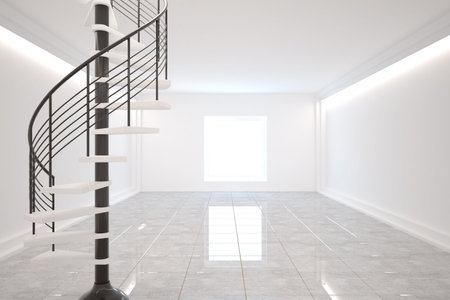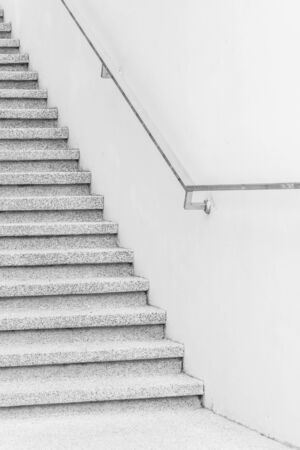Understanding Vastu and the Significance of Staircases in Indian Homes
Vastu Shastra, the ancient Indian science of architecture and spatial arrangement, plays a pivotal role in shaping how homes are designed across India. Rooted in centuries-old traditions, Vastu provides guidelines that harmonise living spaces with the natural elements, ensuring positive energy flow and well-being for the residents. In Indian culture, every corner of the home is believed to have its unique energy, and special attention is given to areas that might often be overlooked—such as the space beneath staircases. According to Vastu principles, staircases represent movement and transition, connecting different levels of a home both physically and symbolically. The area under the stairs, therefore, is not just an architectural leftover but is considered significant from both a cultural and spiritual perspective. Traditionally, this space is thought to influence the health, prosperity, and harmony of the household. Misusing or neglecting it can disrupt the energy balance within a home. Hence, understanding what Vastu says about utilising this space is essential for any Indian family wishing to maintain peace and positivity in their abode.
2. Common Vastu Dos and Donts for Empty Spaces Under Stairs
According to traditional Indian Vastu Shastra, the space beneath a staircase is more than just a functional void; it holds significant spiritual and energetic importance. Indians often seek to harmonize their living spaces with cosmic energies, and the area under the stairs is no exception. Adhering to Vastu guidelines helps maintain positive vibes in the home while avoiding potential pitfalls that may attract negativity or misfortune.
Vastu Dos: Auspicious Uses for Under-Stair Space
When considering what can be placed under the stairs, it is essential to follow certain auspicious practices that align with Vastu principles. Below is a table summarising preferred usages:
| Recommended Usage | Vastu Rationale |
|---|---|
| Storage of daily utility items (shoes, cleaning tools) | Practical storage, keeps clutter out of main areas |
| Bookshelves or study nooks (excluding religious books) | Promotes learning and efficient use of space |
| Drawers and cabinets for non-valuable items | Maintains order without disturbing energy flow |
Key Points to Remember:
- Ensure adequate ventilation and lighting in the under-stair area.
- Use neutral or light colours to keep the space vibrant.
- Keep the area clean and free from dust accumulation.
Vastu Donts: Inauspicious Uses and Common Pitfalls
The following practices are widely regarded as inauspicious or even taboo in many Indian households, as per Vastu beliefs. Avoiding these can help prevent negative energies from entering your home:
| Prohibited Usage | Vastu Reasoning |
|---|---|
| Pooja room or temple space | Sacred activities must not occur below staircases due to downward-moving energy |
| Beds or sleeping arrangements | Considered unhealthy and may lead to health issues due to compressed energy flow |
| Kitchens or pantries storing food grains | Food beneath stairs is thought to absorb negative vibrations, affecting family wellbeing |
| Bathrooms or toilets under stairs | Might cause severe Vastu defects, leading to financial and health problems according to tradition |
| Keeping water tanks or aquariums under stairs | Might disrupt water element balance within the house, attracting misfortune per Vastu experts in India |
| Sitting areas or work desks where one spends long hours daily | Continuous exposure may result in mental stress and lack of progress, as per common Indian beliefs rooted in Vastu texts. |
Avoiding Negative Outcomes:
- Avoid clutter, sharp objects, or waste bins under the stairs.
- Do not place mirrors directly facing the stairway base.
- If unavoidable usage arises, consult a local Vastu expert for remedies like crystal placements or specific colours.

3. Traditional Uses of the Space Beneath Stairs in Indian Culture
In Indian homes, the space beneath the stairs has always been viewed with a blend of practicality and reverence for Vastu Shastra principles. Traditionally, families have found multiple ingenious ways to utilise this area while keeping cultural beliefs intact. Many households convert the under-stair space into small storage cupboards, ensuring that only non-precious items are kept here, as Vastu advises against placing valuables or sacred objects in this spot.
Another common practice is transforming this area into a modest shoe rack or umbrella stand, especially near the entrance, which aligns with the belief that footwear and wet items should not cross into the living spaces. In some regions, elders remember using the space for storing grains or earthen pots, symbolising abundance but also mindful of Vastus guidance to avoid clutter and maintain cleanliness.
Some families creatively use this area as a bookshelf or a compact study nook for children, provided it is well-lit and ventilated—a nod to modern adaptation without disregarding age-old wisdom. In South India, it is not uncommon to see decorative artefacts or traditional brassware displayed here, carefully chosen so as not to disturb the energy flow.
Importantly, Vastu Shastra discourages converting this zone into a puja room or keeping pictures of ancestors here, as it is believed to be an inauspicious location for anything sacred or emotionally significant. Thus, whether as storage, display, or utility corner, Indian families harmonise functionality with tradition by observing these subtle yet meaningful Vastu rules.
4. Vastu-Compliant Decoration and Storage Ideas
Utilising the space under the stairs in Indian homes can be both practical and auspicious if done according to Vastu Shastra. Here are some suggestions for decorating and organising this area while ensuring positive energy flow and cultural harmony:
Vastu-Friendly Storage Solutions
The empty space under the staircase should not be left cluttered or misused. According to Vastu, certain types of storage are preferred, while others should be avoided. For example, avoid storing water-related items such as aquariums or water tanks, as these can disturb the energy balance. Instead, use this space for storing household items that do not carry religious or sentimental value.
| Dos (Recommended) | Donts (To Avoid) |
|---|---|
| Shoes racks (well-organised) | Water tanks, aquariums |
| Bookshelves (not religious texts) | Puja rooms or idols |
| Cupboards for daily utilities | Storing valuables or cash lockers |
| Closed cabinets for tools/toys | Bathroom or washbasin installation |
Culturally Relevant Decoration Ideas
Decorating the under-stair area with elements that resonate with Indian aesthetics and tradition enhances both beauty and positivity. Opt for soft lighting using diyas or LED lamps in warm hues, avoiding bright red or black lights. Place traditional artefacts like terracotta pots, brass utensils (without using them for puja), or ethnic handicrafts to add an Indian touch.
Plants and Greenery
If you wish to introduce greenery, choose low-maintenance indoor plants such as money plant, bamboo, or snake plant. Avoid thorny plants like cactus or bonsai with stunted growth here, as per Vastu beliefs.
Seating Nook with Cultural Flavour
You can create a small reading nook using colourful floor cushions, khadi rugs, and handloom throws. Incorporate wooden shelves with decorative jars containing fragrant spices (cloves, cardamom) which are believed to bring prosperity and good luck in many Indian households.
Maintaining Order and Cleanliness
A clutter-free under-stair space is essential for a harmonious home environment. Regularly clean and organise this area, using closed storage units to avoid dust accumulation. Do not use this space as a dumping ground for old newspapers or unused items.
5. Dos and Don’ts: Items to Avoid Placing Under Stairs According to Vastu
Understanding Vastu Restrictions for Staircase Spaces
According to Vastu Shastra, the space beneath a staircase is considered to have lower energy due to its constant movement and weight. Therefore, careful attention must be paid to what is stored or placed in this area to avoid negative influences in your home’s environment.
Items and Activities to Avoid Under Stairs
- Puja Room or Mandir: Never construct a puja room or place deities under stairs. In Indian tradition, this area is not considered pure and placing sacred idols here is believed to disturb spiritual energy and disrespect divine entities.
- Valuables and Cash Lockers: Storing valuables, cash boxes, or jewellery lockers here is discouraged. The downward pressure of stairs is said to suppress prosperity and attract financial instability.
- Water Elements: Installing water tanks, fountains, or even aquariums under stairs should be strictly avoided. Water represents wealth in Vastu, and keeping it here may lead to financial drains or emotional disturbances.
- Study or Work Tables: Setting up a study desk or office table below the stairs can obstruct concentration and progress, as the disturbed energy flow hampers focus and intellectual growth.
- Bedding or Sleeping Area: Using the space for sleeping arrangements is inauspicious. Resting under a staircase can lead to health issues due to the constant movement overhead affecting peace of mind.
Additional Precautions for Indian Homes
- Avoid Toilets: Constructing toilets under stairs is strongly prohibited as per Vastu. This can bring severe negativity into the household and impact family harmony.
- No Inauspicious Objects: Do not store broken items, old footwear, brooms, or garbage here. Such objects attract stagnant energy (tamasic vibrations) that may affect overall well-being.
Cultural Insight
Many Indian families believe that respecting these rules helps maintain positive vibes (shubh urja) at home. While creative storage is encouraged, always ensure that the usage aligns with traditional wisdom for peace, prosperity, and good health.
6. Balancing Modern Lifestyles and Vastu Beliefs
In today’s urban India, homes are becoming more compact, and every inch of space—including the area under the stairs—matters. Indian families often find themselves trying to strike a balance between the age-old wisdom of Vastu Shastra and the demands of modern living. Here are some practical strategies to help harmonise traditional Vastu practices with contemporary needs, especially when dealing with limited space in metropolitan homes.
Understanding Urban Constraints
The first step is acknowledging the constraints of city life. Flats and duplexes in cities like Mumbai, Delhi, or Bengaluru rarely offer expansive layouts. Instead, families must work with what they have while still respecting cultural traditions. Rather than strict adherence, consider adapting Vastu principles creatively without compromising on functionality.
Smart Utilisation of Space
For instance, if Vastu advises against using the space under stairs for bathrooms or kitchens, opt for solutions such as storage units, bookshelves, or decorative elements like indoor plants (preferably artificial if sunlight is limited). Modular cabinetry can keep the area clutter-free yet useful, aligning with both Vastu recommendations and daily requirements.
Combining Aesthetics with Tradition
Indian homeowners can blend aesthetics and tradition by incorporating elements that symbolise positivity—such as idols, lamps, or family photographs—in the staircase nook. These not only brighten up an otherwise neglected space but also maintain a sense of auspiciousness as per Vastu beliefs. Choosing earth-tone colours or wooden textures further enhances harmony and aligns with Indian tastes.
Consulting Modern Vastu Experts
Many contemporary Vastu consultants understand the realities of urban housing and provide customised advice. They may suggest remedies like placing mirrors strategically, using crystals, or installing lighting to neutralise negative energy when full compliance isn’t possible. Seeking guidance ensures that solutions are practical for nuclear families juggling work-from-home setups and children’s study areas.
Fostering Family Consensus
Ultimately, balancing modern lifestyles with Vastu beliefs requires open communication among family members. Respecting elders’ sentiments about tradition while also considering the younger generation’s needs creates a harmonious home environment. Remember, the goal is to nurture peace and prosperity without sacrificing comfort or convenience in your Indian home.


